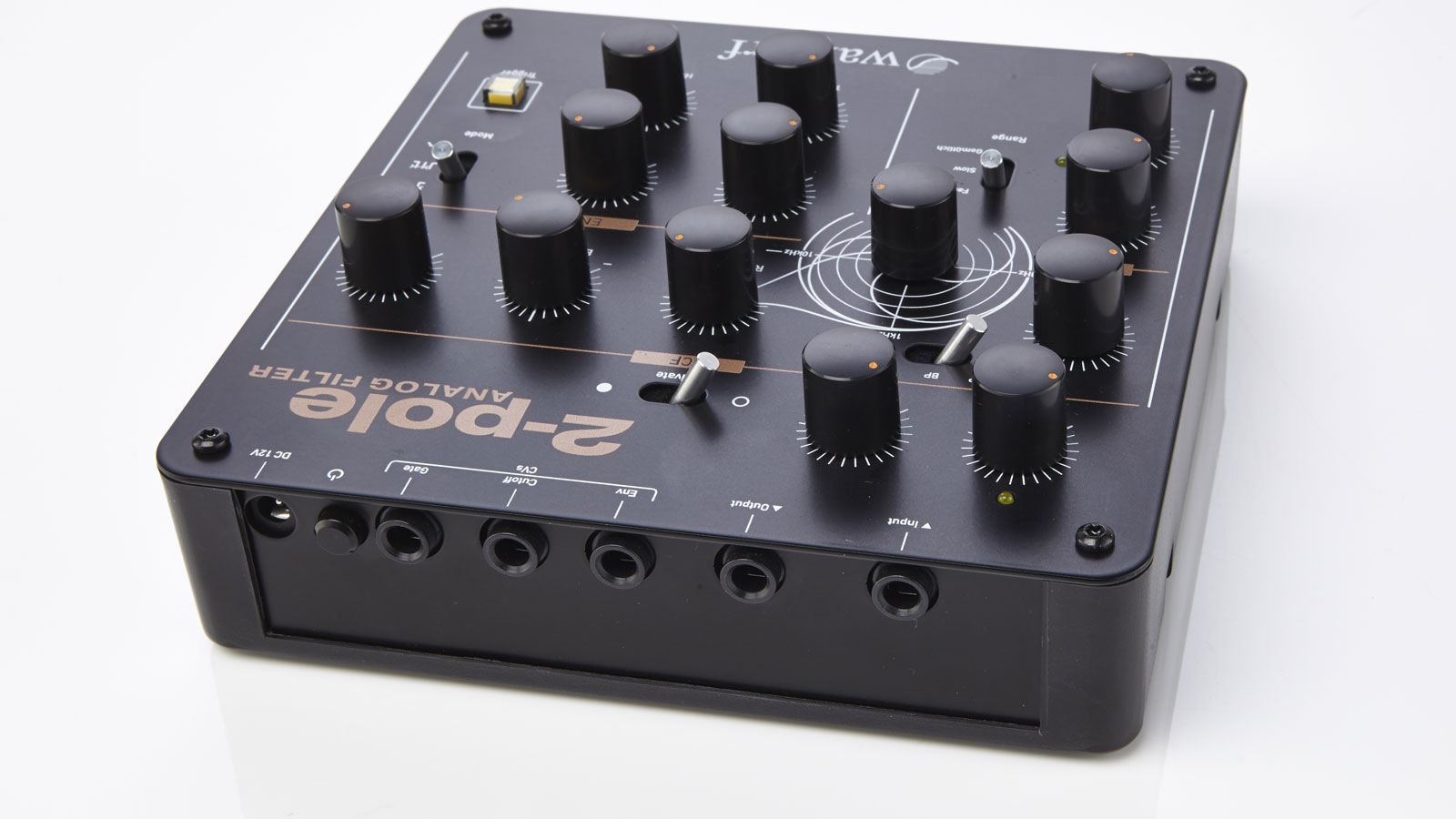MusicRadar Verdict
Gritty, flexible and a lot of fun, the 2-Pole is a great way to instantly add character to your sounds.
Pros
- +
Characterful sound with a real vintage flavour. Flexible modulation tools capable of wild effects. Highly tweakable knob-per-function layout.
Cons
- -
Not ideal for DJ use, despite claims. Noisy as gain and drive increase.
MusicRadar's got your back
German synth manufacturer Waldorf has always had a reputation for producing quality filters, yet it's been 11 years since it last released one as a standalone hardware unit.
"There are no concessions to digital technology thrown into the mix here"
As with past Waldorf filters, the 2-Pole features an entirely analogue signal path but, unlike previous offerings such as the MIDI-equipped X-pole and the hybrid 'analogue plug-in' AFB 16, there are no concessions to digital technology thrown into the mix here.
We get a mono filter with low-, high- and band-pass modes, cutoff and resonance controls and a very old-school range of modulation tools. There's an LFO with three speed settings and a rate control, which can be pushed into the audible frequency range to create interesting distortion effects.
There's also an envelope follower with three modes and a trigger section, operated via a manual trigger button or external input. Additionally there are CV inputs for controlling the envelope and filter cutoff. On top of that, the 2-Pole features preamp gain, a rectifier and post-filter overdrive, which can be used to add vintage-sounding dirt and colouration to the sound.
All of this is housed in a plastic chassis with metal top, the same size and shape as Waldorf's recent desktop synth Rocket (and also the forthcoming Streichfett). The build quality isn't quite up there with Waldorf's more expensive instruments, but it feels robust and solid enough for the price.
Vintage design
All in all it's a decidedly retro piece of kit, but it's this unflinchingly old-school ethos that makes the 2-Pole appealing. If you're looking for a reliable filter with a pristine signal path and modern modulation options, high-end software is probably the way to go. What the 2-Pole offers is precisely the opposite - it's noisy and often unpredictable but it's absolutely packed with character.
Let loose
"Cranking the resonance turns the 2-Pole into an utter beast"
With the resonance down, the filter itself is smooth and warm, and capable of lovely wide sweeps in all three modes. Cranking the resonance turns the 2-Pole into an utter beast. At maximum it's capable of self-oscillation, whilst at mid-range it's great for creating Acid-style squelches and funky filter sweeps. Rectify and Drive both sound great too, adding pleasingly musical grit to every sound source we tested.
Be warned, however, that the 2-Pole can be pretty noisy as soon as you start turning up Gain and Drive. As a result, when using the unit as an external effect within Ableton, we occasionally found ourselves having to turn to a gate or corrective EQ to remove a little unwanted hiss.
Whilst the modulation options might be a little old-fashioned, they're still flexible and capable of being 'played' in a very musical fashion. The 2-Pole ships with an excellent quick start guide that demonstrates how the unit can be set up as anything from an auto-filter to a wah-wah, noise gate, or even a tuneable kick drum.
In fact, Waldorf pitches the 2-Pole as 'a filter for everyone', claiming that the effect is ideal for guitarists and DJs as well as studio use. Whilst we'd question the DJ claim slightly - its mono signal path isn't ideal for DJ use - we did get a chance to test the 2-Pole on a bass guitar, with some great fuzzy, funky, post-punk-like results, and we imagine it would make a great guitar effect when coupled with a pedal.
Its best use, however, is as a tool for adding authentic analogue characteristics to digital sounds. We had great results using it to saturate and warm up digital modelling synths and as a tool for adding a little analogue unpredictability to modern plug-in instruments. As a means of injecting instant analogue grit into your sounds at an affordable price, the 2-Pole is highly recommended.
I'm the Managing Editor of Music Technology at MusicRadar and former Editor-in-Chief of Future Music, Computer Music and Electronic Musician. I've been messing around with music tech in various forms for over two decades. I've also spent the last 10 years forgetting how to play guitar. Find me in the chillout room at raves complaining that it's past my bedtime.
“A synthesizer that is both easy to use and fun to play whilst maintaining a decent degree of programming depth and flexibility”: PWM Mantis review
“I feel like that song had everything we needed to come back with”: Bring Me The Horizon’s Lee Malia on Shadow Moses, its riff and the secrets behind its tone, and why it was the right anthem at the right time
“I said, ‘Are we sure we can write a song about death?’”: The story of Mike + The Mechanics' classic No.1 The Living Years










